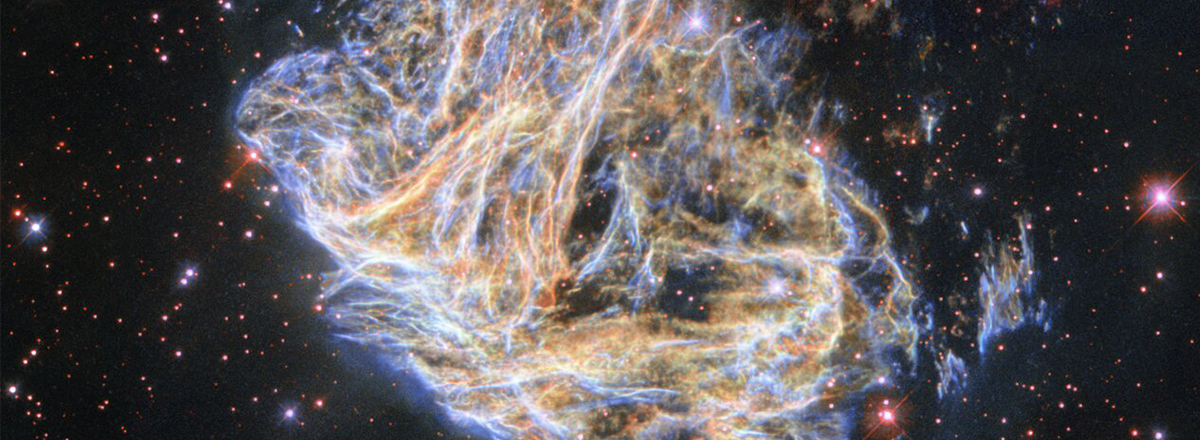Hubble Space Telescope Captures Celestial Fireworks Left by a Star's Death
The image shows intertwined strands of blue and orange that are the remnants of the supernova DEM L 190. The structure is located in the Milky Way's companion galaxy, the Large Magellanic Cloud, and hides a rapidly spinning neutron star.

Scientists have published an image of colorful celestial "fireworks" that formed after a supernova explosion in the Large Magellanic Cloud, a satellite galaxy of the Milky Way.
The image shows intertwined strands of blue and orange that are the remnants of the supernova DEM L 190, also known as LMC N49. It is located around 160,000 light-years from Earth in the constellation Dorado. Such remnants result from a powerful explosion when a massive star ends its life cycle.
The light from this supernova explosion reached Earth thousands of years ago. The structure left by the star will become the building blocks for the next generation of stars in the galaxy.
This supernova debris, 75 light-year-wide, is the brightest supernova remnant within the Large Magellanic Cloud.
But after the supernova explosion, it wasn't just this bright debris left behind. Scientists believe that inside this glowing gas cloud lurks a rapidly spinning neutron star, which was formed when the core of the exploding star collapsed under the internal pressure of its own gravity.
The neutron star's mass is comparable to that of the Sun, but its size is much smaller. This star is so dense that a teaspoon of its matter weighs about 4 billion tons. This neutron star rotates around its axis at an enormous speed and makes a complete revolution in just 8 seconds. Moreover, its magnetic field is about a quadrillion times stronger than the Earth's.

